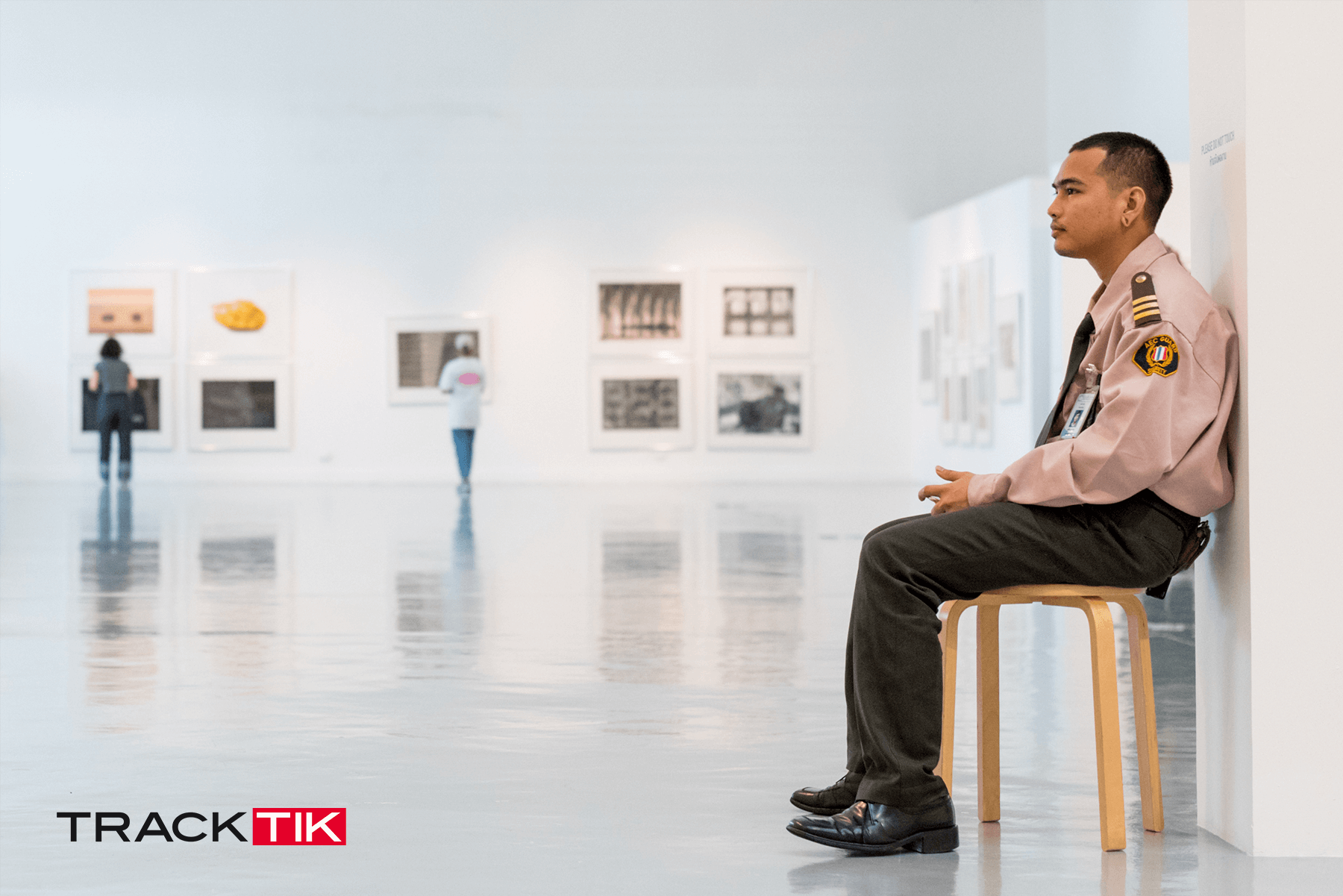In New York City, artist Elsa Schiaparelli, who also happens to be a Metropolitan Museum of Art security guard, recently started making buttons that display the museum guards’ wages and years of service. The buttons state how long she and the other guards have worked at the museum and how much they are paid per hour. Her button reads 27 years, $22.65/hour. The museum guards’ union is currently in a wage dispute with the museum, but according to the artist, while the buttons might be viewed as a gesture of activism, she considers the buttons as a commentary on time and money and how people should not be defined by their incomes.
Meanwhile, over at the Smithsonian, an unidentified man breezed by the metal detectors and screening procedures and found himself surrounded by the museum’s priceless treasures. While nothing was taken, security guards at the museum say the breach happened because the museum is so short-staffed. There was no security guard posted at the door.
Security Guards Curate Their Own Exhibit
Known as “Guarding the Art,” the exhibit will open from March 27 to July 10 at the Baltimore Museum of Art. “Guarding the Art” will feature 17 of the museum’s guards chosen pieces. The exhibit is particularly interesting as it gives visitors a unique opportunity to learn about the personal lives of the guards who chose the paintings and their motivation for the artwork they chose. It starts a lot of conversations.
The idea for the exhibit came from one of the museum’s trustees, Amy Elias, who considered “how the guards spend more time with art than anyone else.” So she pondered the idea and decided it was important to hear from the guards who worked in the museum about what pieces they found most meaningful to them.
According to the guards who participated in the selection of artwork, it gave them all a new respect for how museums work, like the behind-the-scenes considerations that go into choosing a piece to use as part of an exhibit. For the process, the guard curators received mentorship and a crash course in art history and selection from a famous art historian – Dr. Lowery Stokes Sims.
Museum Security Technologies
Museum security can be challenging as museums need to strike a balance between providing security guards while at the same time not appearing intrusive. Manned guarding alone is not enough to protect the artwork from would-be thieves. So, in addition to manned guarding using physically strong and observant guards, most museums also rely on a layered approach to technologies, including video surveillance, CCTV cameras, motion detectors, smoke detectors, intruder alarms, and other physical security devices to protect museums and their artwork. But the other complicated part of museum security is that it should be nearly invisible to ensure visitors feel welcome.
Today’s security guards undergo training to use the available security technology to communicate with other security guards in incidents of vandalism, theft, or natural disaster. Behind the scenes, security guards are trained to use technology to record data and monitor video screens to observe museum visitors. A security workforce management solution would be an ideal tool to equip museums. It allows museum guards to log incidents, display messages, open a report form, capture images and video, or trigger an incident alert at a checkpoint.
8 Top Tips For Securing Museums
- Consider investing in a security workforce management solution to provide real-time communication between museum security and staff.
- Use scheduling software that captures data to keep track of which guards are failing to cover their shifts or jeopardizing the safety and security of the museum.
- Ensure that entrances, perimeters, or CCTV cameras are not obscured by trees, hidden corners, or hedges.
- Monitor access points and minimize the number of access points.
- Install motion detectors and intruder alarms.
- Ensure that all security guards and museum staff are trained in security awareness.
- Rotate your security guards to avoid predictability.
- Ensure a visible but discreet security presence in display areas that house valuable pieces of artwork.
Museum security guards protect rare and highly sought-after objects that can’t be replaced. Many of these objects are worth millions of dollars. To protect your investment, museums need to consider upping their security game by equipping their teams with modern security technologies to ensure the safety and security of your artwork.
To learn more about how a security workforce management solution can secure your museum, visit TrackTik.
About TrackTik
TrackTik was founded in 2013 and quickly established itself as a market leader with the mission to build better software so its clients can run smarter businesses. TrackTik’s cloud-based technology enables security organizations to connect frontline staff, back office management, and their clients to drive improved operational efficiency and data insights. TrackTik helps security professionals make automated, data-driven decisions with its seamless approach to system connectivity. Headquartered in Montreal, Canada, with offices in the United Kingdom and the Netherlands, TrackTik offers four integrated suites of tools – Security Operations for Guarding, Back Office Management, Mobile Patrol and Dispatch, and Business Intelligence & Reporting Analytics, to help security service companies follow the progression of guards, reduce manual tasks, lower costs, and demonstrate value.


